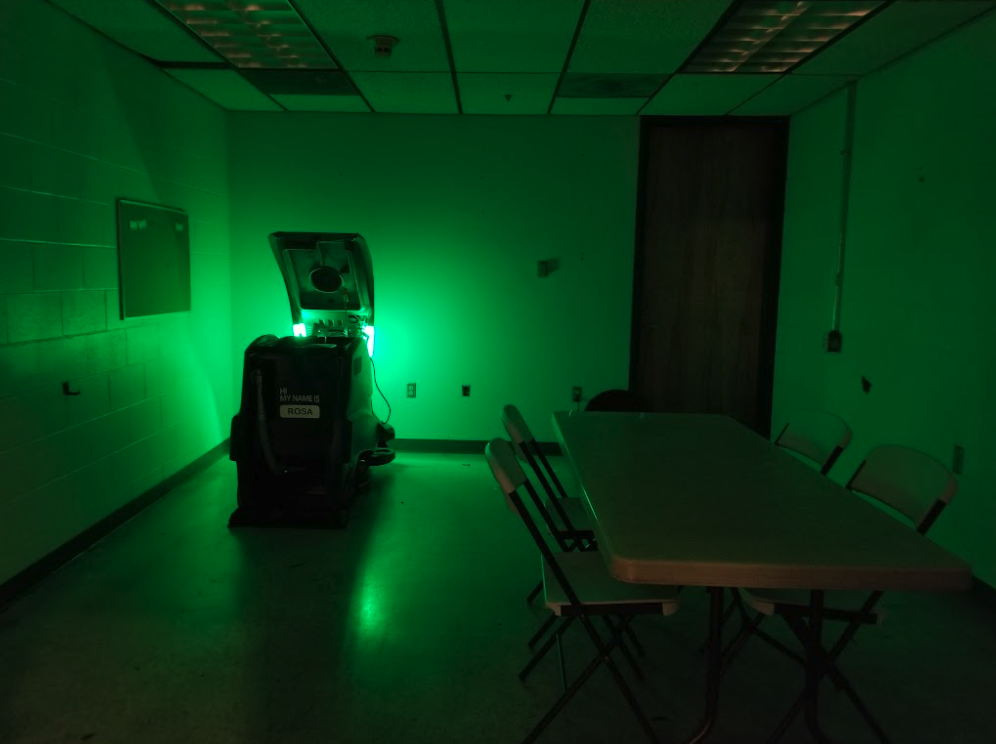An AI-powered autonomous cleaning robot at the International Airport.
The Transformation of Essential Work: Managing the introduction of ai in response to Covid-19
Role: Graduate Student Research Assistant
Dates: January 2021 — May 2022
Scope: Design Research; Participatory Design; Qualitative Research; Team Management; Data Analysis
Focus areas: Critical AI; AI Ethics; Labor; Essential Work; COVID-19
Funded by: National Science Foundation (NSF)
Overview
This project is phase two of a larger body of work. It builds upon discourse analysis on the way mainstream media in the US depicted autonomous robots in relation to essential work at the height of the COVID-19 pandemic. Through this work, the team found that the media positioned the robots as saviors that alleviate additional work for those deemed “essential workers” in the era of COVID-19.
For phase two, the team, led by Sarah E. Fox, PhD, focused on gaining a qualitative understanding of the implementation process of the AI-powered robotics at two sites: a recycling plant in Austin, TX and an international airport in Pittsburgh, PA.
I was brought onto the team to support the qualitative research and lead the participatory and co-design aspects of the research. Phase two focused on direct engagement with the janitorial staff and gaining a contextual understanding of the robots roles in both locations. My role focused on solely Pittsburgh, PA.
High-level Findings
We found that administrators at the airport believed the rhetoric, upheld by journalists, that AI-powered technologies were completely autonomous, providing much needed support at the height of the COVID-19 pandemic. With the increasing changes to the standards of cleanliness in all venues, including large-scale airports, the organization felt that it was imperative to incorporate autonomous cleaning robots. In the same vein, we found that this was an opportune moment for the airport to install these robots as a form of posturing to the public, given their aspiration to become “the smartest airport” in their field. The combination of rhetoric, organization’s aspirations, and the abrupt change brought on by COVID-19 created the conditions for the AI-powered technologies to interrupt the day-to-day work of janitorial staff of the airport.
We found that the AI-powered technologies did not function on their own. They required human maintenance yet were without a system, whether by the manufacturer, deploy-er, or the airport, to install a human support system for the robots. Instead, janitorial staff were tacitly tasked with the implicit expectations of managing, in an ad hoc style, and maintaining, without context-specific support from the engineers, of the robots.
Through our 8-10 months of ethnographic and qualitative research, we argued that janitorial staff’s additional work brought on by the malfunctioning robots is innovation and innovative. We emphasize that they are integral actors in the designs of implementation strategies of AI, and, therefore, core sources for conducting ethical AI. Moreover, through their first-hand accounts and in-depth understandings of their everyday working life, we state that workers must be consulted in implementation strategies in order for AI practices to be ethical.
Process
This project included eight months of on-site research at an international airport in Pittsburgh, PA. This included several hours of observations, half-day shadowing janitorial staffers, semi-structured interviews with multiple stakeholders (including practitioners in the field working in adjacent companies that produce similar types of robots), and interactive workshops that aimed to understand janitorial staff’s day-to-day work.
In addition to this work, I managed three undergrad research assistants, one grad research assistant, and two undergraduate students who focused on communication design.
This research applied the grounded theory method.
Outcome
This project resulted in two categories: (1) recommendations for different stakeholders in the field, such as journalists, administrators, and managerial staff; and (2) written work for academic and public audiences.
There are two papers from this work that I was a co-author of:
Stories from the Frontline: Recuperating Essential Worker Accounts of AI Integration
Patchwork: The Hidden, Human Labor of AI Integration within Essential Work

